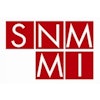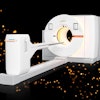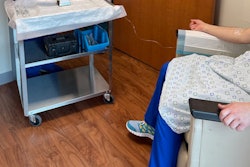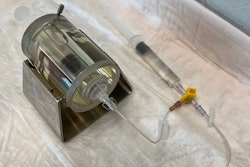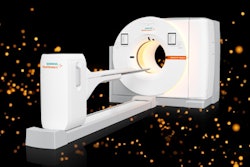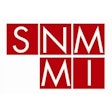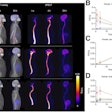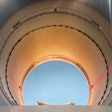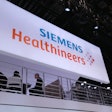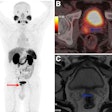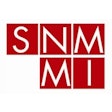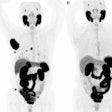Adverse extravasation events have a negligible impact on treatment efficacy and safety in cancer patient undergoing lutetium-177 (Lu-177) DOTATATE therapy, researchers have reported.
The finding reinforces the safety of Lu-177 DOTATATE (Lutathera, Novartis) administration protocols and emphasizes the low clinical risk associated with extravasation during therapy, noted lead author Gunjan Kayal, PhD, of Memorial Sloan Kettering Cancer Center in New York City, and colleagues.
“Extravasation of radiopharmaceuticals raises potential concerns, including adverse tissue reactions and reduction in both quantitative accuracy and therapeutic efficacy,” the group wrote. The study was published June 26 in the Journal of Nuclear Medicine.
Understanding the factors contributing to extravasations – where a measurable amount of injectate leaks into subcutaneous tissues – and their impact is crucial for optimizing treatment outcomes and ensuring patient safety, the authors explained. To that end, the group reviewed the frequency and severity of extravasation events in patients treated at their center with Lu-177 DOTATATE, a therapy for neuroendocrine tumors approved in the U.S. in 2018.
From May 2017 to April 2024, 1,314 administrations of the drug were performed on 365 outpatients, with each treatment delivered through a slow infusion process using an infusion pump. Between three to four hours after injections, patients also underwent whole-body planar imaging to confirm administration and to assess extravasations, which were indicated by focal increased uptake at the infusion site.
According to the analysis, 14 cases (1.1%) had increased uptake at the infusion site, suggesting extravasation. In most cases, patients reported mild discomfort at the infusion site during the initial check, though no visible swelling was observed, the researchers noted.
 Planar gamma camera images (conjugate view geometric mean) of 14 patients with identified extravasations (highlighted in red dashed box) acquired using Philips XCT (patients 1-4) and Siemens Symbia 1 and 2 SPECT/CT systems (patients 5-14). All patients, except patient 2, had infusion in left arm. Gray scale was narrowed to 20% to enhance visualization of extravasations.Journal of Nuclear Medicine
Planar gamma camera images (conjugate view geometric mean) of 14 patients with identified extravasations (highlighted in red dashed box) acquired using Philips XCT (patients 1-4) and Siemens Symbia 1 and 2 SPECT/CT systems (patients 5-14). All patients, except patient 2, had infusion in left arm. Gray scale was narrowed to 20% to enhance visualization of extravasations.Journal of Nuclear Medicine
Further, the maximum radiopharmaceutical retention at the infused site was less than 1% of total injected activity and less than 2.1% whole-body activity, while extravasated activity related to administered activity was 0.07%, according to the results. Lastly, in the 14 cases, the median absorbed dose in the infused arms of patients, assuming a 5-mm infiltration depth, was 0.53 Gy (maximum, 1.23 Gy).
“We found no patients retained more than 1% of the injected activity at the infusion site at the time of scanning, and no adverse events, including local cutaneous tissue damage or deterministic radiogenic skin injuries, were reported, either immediately or in the subsequent days or weeks,” the group wrote.
Ultimately, the study reinforces the safety of Lu-177 DOTATATE administration protocols, which include factors such as controlled slow infusion (using a Graseby pump), careful verification of intravascular needle placement, and continuous monitoring, the researchers noted. The study also highlights the importance of early imaging after therapy to identify potential cases, they added.
“Early imaging after therapy is critical in identifying patients at potential risk of local radiotoxicity resulting from theranostic infiltrations, indicating its importance in patient care management,” the researchers concluded.
The full study is available here.


